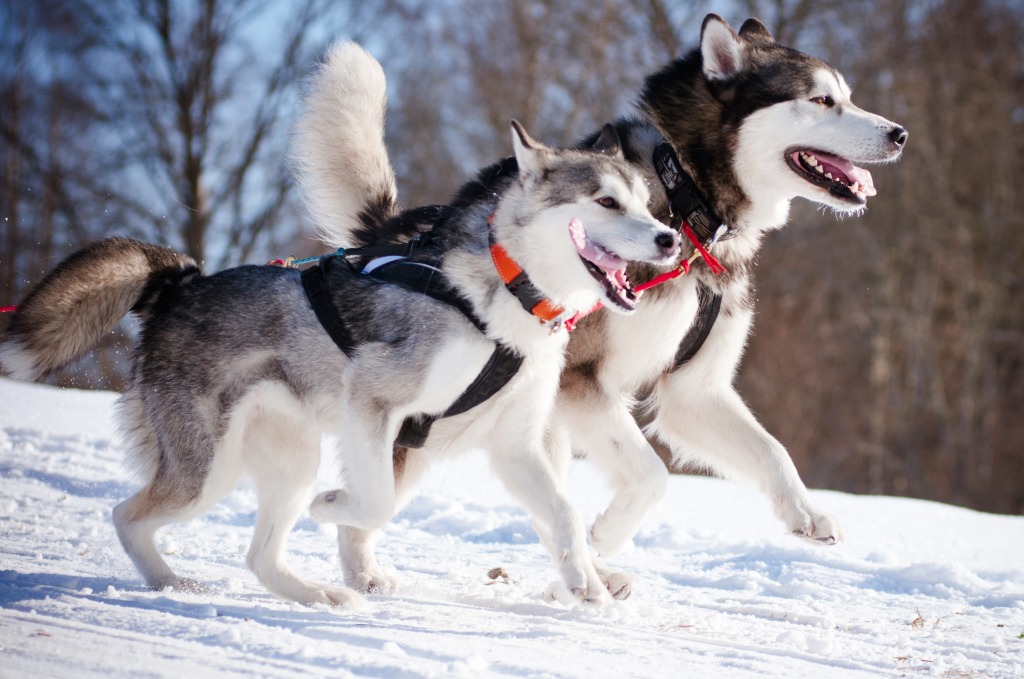How did we get small, loyal Poodles and Corgis, massive sweet tempered Great Danes, and thousands more dog breeds from wolves? What made people decide to breed dogs rather than pigs or foxes to become our best friends? An article inNature (May 2017) sheds light on this by describing research on the bones of 9000-year-old dogs. They are the oldest remains of dogs, found on a remote Siberian island, Zhokhov. Zhokhov was once attached to the Russian mainland, where polar bears roamed, who used thick sheets of snow as camouflage. The analysis of the canine bones from Zhokov suggests that the dogs were bred to pull sleds and to help with hunting. Canine bones were found with remains of wooden sleds. The oldest record of domestication of dogs before the Zhokhov discovery was 7000-year-old dog remains in the Near East used herding purposes. Archeologists determined that the bones found in Zhokhov were not wolves by measuring the skull.
Eleven dog remains were studied from the island. Ten out of the eleven weighed between 16 and 25 kilograms and may have resembled Siberian Huskies (what the dogs resembled will be released at some point this month in the Journal of Archaeological Science: Reports.) The one dog not in the weight ranged, weighed 29 kilograms and may have been similar to an Alaskan Malamute. The lighter dogs were better for sled pulling, whereas the larger dog was most likely used for hunting animals such as polar bears.
Scientists have yet to agree on when dogs were first domesticated. Recent research suggest domestication started around 15,000 years ago when the Earth began to warm. Large species such as the woolly mammoth started to disappear and smaller game began to populate the land. Dogs were able to hunt smaller prey, which was a reason for humans to begin following them. Melinda Zeder, an archaezoologist at the Smithsonian Institution National Museum of Natural History, found through her research that multiple animals spent time around human campsites, such as badgers and foxes. They might have been tamed, but they didn’t become domesticated because they did not provide use to humans. Domestication truly began when humans started to shape dogs into breeds by picking the slimmer dogs from the litter for sledding or the larger pup for hunting. Now thousands of years later, there is no one more excited to see you return home, after as little time as 30 minutes or as long as a military deployment of years. Your dog will attack you with sloppy kisses and a pounding tail, thanks to our ancestors who needed to be pulled through miles of snow and ice and found an animal loyal and kind enough to do so.
To read more click here





